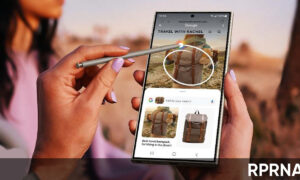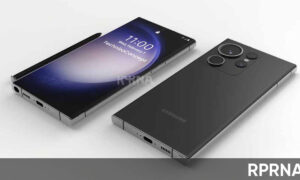After three developer previews of the upcoming Android 12, Google has now released the first beta update for the eligible Pixel phones for testing purposes. This update is more stable in nature than the developer previews.
Android 12 contains the biggest design change in Android history. The company rethought the entire experience, from color to shape, lighting and movement. The result is that Android 12 is more expressive, dynamic, and personalized than ever.
Android 12 Beta 1 Eligible devices
- Google Pixel 3
- Google Pixel 3a
- Google Pixel 3a XL
- Google Pixel 4
- Google Pixel 4 XL
- Google Pixel 4a
- Google Pixel 4a 5G
- Google Pixel 5

Android 12 Beta 1 Features
Personalize
Starting with Android 12 on Pixel devices, you will be able to fully personalize your phone with custom color palettes and redesigned widgets. Using our so-called color extraction function, you can choose a wallpaper, and the system will automatically determine which colors are dominant, which colors are complementary colors, and which look good. Then, it applies these colors to the entire operating system: notification bar, lock screen, volume control, new widgets, and so on.
This work is done in deep cooperation between our software, hardware, and material design teams. Google is using a design language called Material You to unify our software and hardware ecosystem.
Fluid motion and animations
From the moment you pick up your Android 12 device, you will feel its vitality every time you tap, slide and scroll. Your phone will quickly respond to your touch with smooth motion and animation. For example, when you turn off notifications on the lock screen, your clock will appear bigger so you know when you are caught up.

With Android 12, the company also simplified the interaction and redesigned the entire basic system to make your experience smoother and more efficient. Now, your Android device is faster, more responsive, and more power-efficient, so you can use the device for a longer period of time for free. This is achieved through a number of behind-the-scenes improvements, including reducing the CPU time required for core system services by up to 22% and reducing the use of large cores by system servers by up to 15%.
Redesigned system spaces
Some of the most important spaces on the phone (such as the notification bar, quick settings, and even the power button) have been reimagined to help you get your work done.
The notification bar is more intuitive and interesting. It can clearly display your application notifications. No matter what you are currently listening to or watching, the quick setting allows you to swipe and quickly control the entire operating system tap. Not only does the quick setting space look and feel different. It has been restructured to include Google Pay and family control, while still allowing customization, so you can get everything you need most in one easy-to-access place.

To ensure that you always get help from Google at any time, you can now long-press the power button to invoke Assistant to make calls, open apps, ask questions, or read a lot of text articles.
Privacy and Security
Android 12 includes new features that allow you to be more transparent about which applications are accessing your data and more controls, so you can choose wisely how much private information an application can access.
The new privacy dashboard provides a single view of your permission settings and what data you are accessing, the frequency of access, and the frequency of applications. It also allows you to easily revoke app permissions directly from the dashboard.
A new indicator has been added to the upper right corner of the status bar to let you know when the app is accessing the microphone or camera. Moreover, if you want to delete the app’s access to these sensors of the entire system, also there are two new toggle buttons in the “Quick Settings”.
With the new approximate location permissions, you can restrict apps to only seeing your approximate location, rather than the precise location. For example, weather apps don’t need your precise location to provide accurate weather forecasts.














